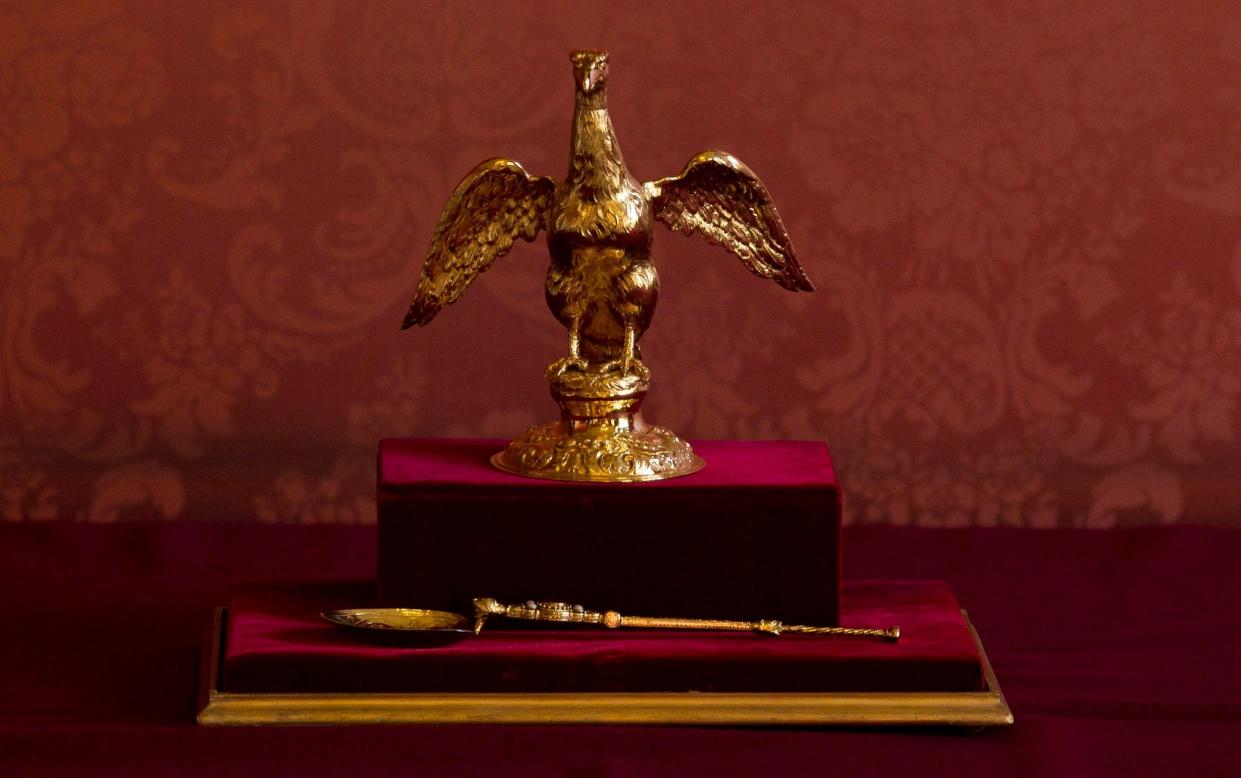Fascinating history of the Coronation Spoon, the oldest relic used in the ceremony

The British monarchy has endured abdications, insurrections and myriad wars. But the only surviving relic from the tumultuous medieval period is an unlikely candidate.
A small silver gilt spoon is the only known artefact preserved from St Edward’s Regalia and it is set to play a major part in the Coronation of King Charles on Saturday.
The Coronation Spoon was first recorded in the Royal Collection more than 600 years ago, in 1349, and has been used in every crowning ceremony of a British monarch since James I in 1603.
Dating back to the 12th century, it is the oldest paraphernalia used in coronations.
The ceremonial spoon is believed to have been supplied to Henry II or Richard I and is the only piece of royal goldsmiths’ work to survive from that century.
It has been entrusted to the care of the Royal Collection Trust, the charity in charge of maintaining and displaying a large collection of royal artefacts.
Kept on display in the Tower of London alongside the Crown Jewels, it plays an integral part in the most sacred moment of the service, the anointing of the monarch.

The anointing takes place before the investiture and crowning and is when the Archbishop pours holy oil from the Ampulla (or vessel) onto the Coronation Spoon, and anoints the sovereign on the hands, breast and head.
The gilded spoon has an oval bowl, divided into two lobes, that is engraved with acanthus scrolls.
A stylised monster’s head joins the stem to the bowl of the spoon, while four pearls flank the part of the stem that flattens into a decorative medallion.
Another monster’s head breaks up the stem further down, before it tapers into a spiral twist design and terminates in a flattened knop.
Despite playing such an important role in coronations for hundreds of years, the spoon was neither seen nor televised or photographed during the late Queen Elizabeth II’s coronation service.
A canopy of cloth-of-gold was held over the monarch’s head for the anointing to protect her privacy, as has been custom.
The King will also be anointed out of sight, enclosed behind a three-sided screen, rather than just a canopy. The new partition pays tribute to the Commonwealth and the monarch's lifelong passion for sustainability.
The sacred tradition is based on the Old Testament, where the anointing of Solomon by Zadok the Priest and Nathan the Prophet is described.
It was traditionally done to confirm that the sovereign was appointed directly by God, but since the seventeenth century, the monarch is no longer considered divine in the same way.
The Coronation Spoon, which is integral to the anointing, was already described as a spoon of “antique forme” in the mid-1300s, due to its stylistical relation to the 12th century.
It remained among the regalia from its discovery until 1649, when it met the fate of being sold off rather than melted down like the other items.
It was bought by the Yeoman of Charles I’s Wardrobe, Mr Kynnersley, for 16 shillings, before being returned to Charles II for use at his coronation in 1661.
It is understood that the spoon only required a small amount of repair after it was returned to royal ownership in 1661, and like all elements of the Regalia, it is subject to regular checks.
Any conservation work is undertaken when necessary and the Crown Jeweller is responsible for reviewing its condition, as with the rest of the collection, and carrying out any necessary treatment in conjunction with the Royal Collection Trust (RCT).
The RCT’s website states that the spoon was “clearly never intended for eating or stirring”, with experts pointing to its divided bowl being suggestive of a ceremonial creation and purpose.
One suggestion is that the divided bowl was designed in this way so that the Archbishop would be able to dip two fingertips into the holy oil.

 Yahoo News
Yahoo News 
